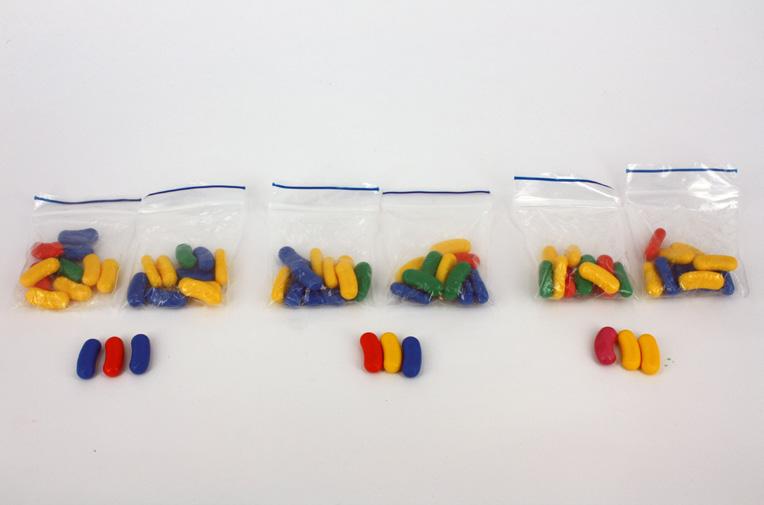Diagnostic questions
Keri is making packets of mini chocolate fish for a gala. She puts five mini chocolate fish in each packet. The mini chocolate fish come in bags of 90.
Keri wants to know how many packets of five fish can be made from one bag.
a. Write down the division equation that needs to be solved.
Note: If the student cannot record the problem as 90 ÷ 5, record this for them and ask what it means.
b. Solve the equation.
Answer: 18
What to notice in the student’s response
Does the student attempt to skip-count in fives to 90?
Does the student make connections between multiplication and division facts?
For example, “90 ÷ 10 = 9, and there will be twice as many if you divide by 5” or “9 x 10 = 90 so 18 x 5 = 90”.
Does the student correctly explain 90 ÷ 5 as “the number of times 5 goes into 90” or “how many fives there are in 90”?
Deliberate acts of teaching
Materials
- x /÷ flashcards (Material master 4-37) (PDF, 81KB)
Flexible use of strategies when problem solving relies on the ability to fluently recall basic facts.
Back and Forth: Family of Facts
Explore relationships within a family of facts by modelling the relationship between 3 x 4, 4 x 3, 12 ÷ 4, and 12 ÷ 3. Students need to recognise that these are different arrangements of the same set.
Print out the x/÷ flash cards. Take one card and a set of interlocking cubes. Arrange the cubes in an array that models the set. For example, if using the numbers 24, 6, and 4, arrange 24 blocks in four rows of six. Ask the student to show you four groups of six, six groups of four, 24 divided into groups of four, and 24 shared among six people. Record each fact in the family. With practice, students will be able to state the family of facts for any three numbers.
Reinforce that division equations can be found using known multiplication equations.
What to do next if the student is stuck
Continue to work with physical models of x/÷ relationships. Use alternative models, such as arrays of stickers or clip art images. When working with paper models, students can use felt pens to circle each factor.
Initiating home-based activities
Give the students a set of flash cards to practise with at home. Parents can place a card in front of the student, cover one of the numbers, and ask the student to use the other two numbers to work out the covered number. The student can identify one x equation and one ÷ equation for each card.
Next teaching steps back in the classroom
Make a set of flash cards available for independent or pair-practice use.
